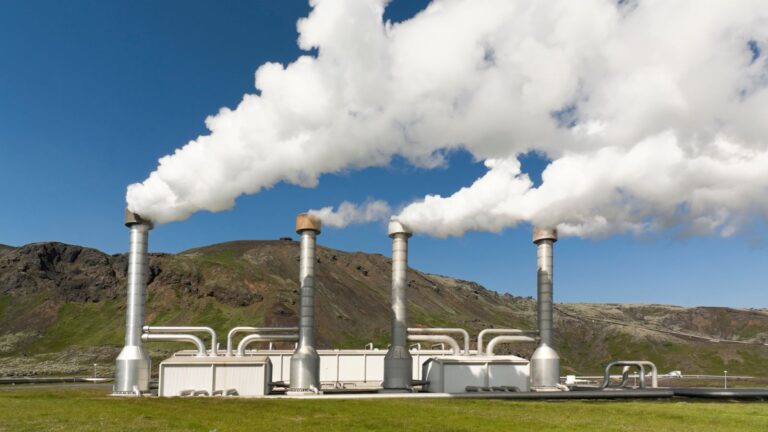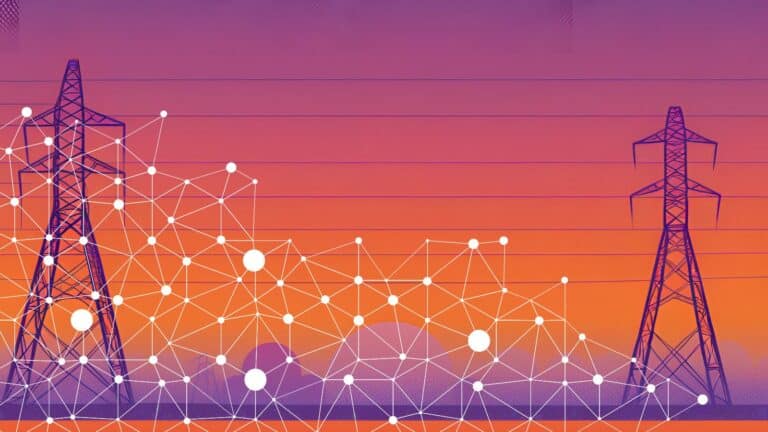On June 1, 2023, Dr. Melissa Lott, Director of Research and Senior Research Scholar, testified before the Senate Energy and Natural Resources Committee on electric reliability in the United States. You can watch an archived recording of the hearing here.
Good morning Chairman Manchin, Ranking Member Barrasso, and members of the Committee. Thank you for the invitation to speak with you today.
My name is Melissa Lott. I am the Director of Research and a Senior Research Scholar at the Center on Global Energy Policy, which is a part of the School of International and Public Affairs at Columbia University in New York. I am also an Adjunct Professor at Columbia University’s Climate School. I have worked as an energy systems engineer and advisor for nearly 20 years in the United States, Europe, and Asia at organizations including the Asia Pacific Energy Research Center, the International Energy Agency, and as a Presidential Management Fellow in the U.S. Department of Energy.
I joined Columbia University three and a half years ago, in the fall of 2019. In addition to my roles at Columbia, since 2022, I have served on the United Nations Council of Engineers for the Energy Transition (CEET), which is an independent advisory council to the U.N. Secretary-General. I am also a member of the World Economic Forum’s Global Future Council on the Future of Economics of Equitable Transition.
My testimony today will first cover the impacts of reliability issues on health and the economy in the United States. Second, I will discuss the broad determinants of grid reliability, including the effects of different fuel sources and technologies in the context of an evolving energy supply mix. Lastly, I will cover actions that the federal government could take to support a reliable and affordable electricity system in the face of a changing climate, evolving demand for electricity, and the integration of new electricity supply technologies.
The U.S. Electricity Mix is Poised to Use More Electricity, New Technologies
Electricity is already a vital part of the U.S. economy, and the role of the electricity sector is expected to grow. Furthermore, the mix of technologies used to produce this electricity is expected to change at a rapid pace moving forward. As discussed below, two key trends underpin this change. First, a need to increase investment in the electricity sector to support reliable access to affordable and clean electricity. Second, a necessity to adopt new tools to support the power sector’s transformation to clean supply technologies.
Today, electricity accounts for just under a quarter (22.3%) of energy end-use. Net electricity generation grew tenfold to 4 terawatt-hour per year (TWh/year) between 1952 and 2005, before flattening out. However, while generation has remained essentially flat since 2005, the mix of technologies supplying electricity in the United States has changed significantly.
Our electricity sector has been decarbonizing and is expected to continue this trend for the next 30 years. Several factors have driven the decarbonization of electricity. Cheap natural gas supplies resulting from advanced hydraulic fracturing and directional drilling techniques have led to significant coal-to-gas switching. Price declines in solar, wind, and energy storage technologies have spurred their adoption across the country. Incentives for the production of renewable energy exist in many states. A significant number (24) of states and territories – representing 52% of the U.S. population – have adopted targets either to decarbonize their power sector and/or decarbonize their entire energy sector by at least 2050. Some states have much more ambitious near-term targets. For example, New Jersey plans to achieve 100% clean electricity by 2035 to support its goal of achieving a net-zero energy sector by 2050. If met, these targets, will radically shift the electricity supply mix away from fossil fuel sources, towards wind, solar, geothermal, and nuclear power. Net-zero ambitions will also increase demand for electricity. Various net-zero pathways see net electricity generation grow from around 4 TWh per year in 2020 to between 5 to 16 TWh/year in 2050.
On the demand side, nearly two-fifths (39%, 1.42 TWh/year) of electricity that is used in the United States is consumed in residential buildings for space heating and cooling, water heating, and other uses (e.g., for electric appliances). Just over one-third (35%, 1.37 TWh/year) of electricity is used by the commercial sector, primarily in commercial buildings. The industrial sector represents around one quarter (26%, 1.01 TWh/year) of electricity use. In addition, a small fraction (around 0.2%, 0.01 TWh/year) of electricity is currently used in the transportation sector, primarily for public transit.
While the future remains uncertain, it seems very likely that electricity generation and consumption will only increase due to a number of factors, including increased electrification across all sectors. For example, the electrification of home heating systems is being incentivized across 15 states, with four states setting explicit deployment targets, targeting 12 million new heat pumps installed by 2030. In fact, electric heat pumps outsold natural gas heaters in 2022 in the U.S. for the first time. Demand for electricity for transportation is also projected to increase. For example, the growth of electric vehicle sales is expected to further increase electricity use both in buildings (e.g., through home charging in residential buildings) and through a network of charging stations. First quarter 2023 sales of electric vehicles exceeded 7% of all new vehicle sales. Seventeen states have already adopted zero-emission vehicle (ZEV) standards and clean car standards that are likely to further accelerate the adoption of electric vehicles.
Major Weather Events are Major Contributors to Blackouts
Access to reliable, affordable, and clean electricity is a major hallmark of a healthy and prosperous society. As electricity use in the U.S. economy increases, so does the importance of ensuring the reliability and affordability of the electricity system, especially as the increasing frequency and severity of extreme weather negatively impact energy infrastructure.
In designing a system that is fit for purpose, it is crucial to understand the different causes of power outages that customers experience to design policies that can successfully address these issues. Power outages generally fall into two main buckets: power loss caused by extreme weather and those caused by lack of generation. In giving U.S. energy system a C- grade in their latest assessment, the American Society of Civil Engineers identifies severe weather as the predominant cause of customer outages. Outages associated with supply-side failures are far less common, but recent infamous examples such as in Storms Uri and Elliott, have pointed out the cold weather vulnerabilities of some conventional power plants and their fuel sources.
Impacts of Blackouts on Health and the Economy
In 2021, the average electricity customer in the United States experienced 7 hours without power. But this number hides the significant variability between states and customer types, as well as the difference between loss of transmission or distribution lines or outages caused by loss of generation. It also does not show how often customers are asked to voluntarily reduce their demand in response to tight grid conditions. In 2021, customers in Louisiana experienced over 80 hours without power, Oregon 25 hours and Texas 20 hours on average.
In February 2021, Winter Storm Uri resulted in multiple blackouts in the United States, particularly in Texas, where 4.5 million homes – approximately 12 million people – lost power for an average of 42 hours. Some rural residents lost power for more than 10 days. The loss of power also left almost half of Texans without access to potable water and the ability to boil available water. A report for the Public Utility Commission of Texas by researchers at the University of Texas at Austin concluded that the storm, while not of record-breaking severity, led to the worst loss of power across the state in terms of number and generation capacity outages. The study found that while no single generator type failure was fully responsible, the largest capacity outages were due to freezing natural gas plants and fuel supply disruptions. Inaccurate weather forecasting, inadequate weatherization of plants and limited natural gas storage ahead of the storm were also listed as contributing factors. The storm left at least 246 people dead in Texas alone.
Winter Storm Uri was not wholly unprecedented. However, the severity of the impacts of the storm were compounded by a failure to learn from previous storms. Following the 2011 Groundhog Day blizzard, FERC issued a winterization recommendation to mitigate the impact of future winter storms. While FERC has begun implementing mandatory weatherization standards for some generators, FERC rules don’t address the weatherization of natural gas wells or other portions of the fuel supply infrastructure that can also fail and take a plant offline.
The health impacts of an extended loss of power can be severe. Extreme weather events, which are increasingly likely in the coming decades, will further strain underprepared power systems precisely at the time when reliance on electricity is growing. Home heating is vital during winter storms. During winter blackouts, some are forced to seek alternative fuel sources such as cooking charcoal or running small generators indoors which can lead to accidental carbon monoxide poisoning.
Further, access to healthcare is limited during power outages. People with elevated health needs requiring medical equipment, such as those using at home ventilators, are some of the most vulnerable when the power goes out. Pregnant women face an increased risk of complications during outages, with low-income, uninsured individuals hit the hardest. In the aftermath of outages, those who can afford them often purchase batteries or backup fossil fuel generators which worsen local air pollution during outages. Low-income families and those who rent housing generally have a lower capacity to prepare for the next power outage and the physical and emotional strain of surviving an environmental disaster can persist for decades.
Power outages cost U.S. businesses, on average, about $150 billion per year. During Winter Storm Uri, Samsung’s giant microchip factory in Austin was forced to shut down for over a month, leading to tens of millions of dollars of economic loses. The broader economic impact of the storms of February 2021 has been estimated at upwards of $300 billion. Outages lead to increased insurance claims, diminished business confidence, and reduced growth. Between 2003 and 2012, estimates put the cost of weather-related outages on the U.S. economy between $18 billion and $33 billion per year.
What Recommendations Could the Federal Government Consider?
Much of the U.S. regulatory framework for the electricity sector is overseen by state legislatures and public utility or service commissions. However, the federal government can take steps to support a more reliable and affordable electricity sector as climate-change-related disasters are poised to increase. As my former colleague John MacWilliams stated in his testimony in 2020 before the before the House Committee on Energy and Commerce, congressional action has been taken before in the wake of reliability issues. For example, after the Northeast Blackout of 2003, Congress enacted the Energy Policy Act of 2005, which both strengthened the North American Electric Reliability Corporation (NERC) reliability requirements and granted the FERC greater ability to levy penalties for non-compliance with those standards. More recently, Congress provided leadership in supporting critical investment in clean energy innovation and infrastructure deployment with the Energy Act of 2020, the Infrastructure Investment and Jobs Act (IIJA), CHIPS and Science Act, and the Inflation Reduction Act.
Today, Congress has the opportunity to provide the leadership to ensure that a future electricity grid can support the delivery of reliable, affordable, and clean electricity to households and businesses around the country. There are a number of actions that the federal government could consider taking across the entire electricity sector outside of policy changes to power supply. New policies to improve the transmission grid and demand-side resources are crucial to ensuring that future Americans access power to support their lives and livelihoods.
First, Congress could consider strengthening communication networks to more effectively provide information to those affected by blackouts. Information such as the expected duration of a blackout and how to stay safe are critical to protecting human health and minimizing damage from reliability events. This critical information could include: where to access support services if safely sheltering in place is not an option; what to do to protect infrastructure in a person’s home; and other emergency-related information (e.g., boil water notices). While the first goal should be to minimize the frequency and duration of blackouts, these networks can help to minimize damage when blackouts occur.
Second, Congress could consider strengthening requirements for risk assessment and mitigation planning in power sector planning processes. Ideally, this policy would require power sector planning processes to consider changing climatic conditions (e.g., temperature and rainfall patterns) and increased electrification of the United States economy. For example, an ongoing partnership between the New York Power Authority (NYPA) and Argonne National Laboratory is leveraging currently available climate and infrastructure modeling techniques to help utilities better assess how extreme weather and other hazards may affect their assets and business. These modeling techniques can also help utilities understand how demand patterns might change given changing weather patterns. These assessments – along with lessons learned from previous reliability events – can directly feed into risk mitigation plans to help ensure a more reliable and affordable electricity system in the midst of an already changing climate. Planning and risk mitigation processes should extend beyond the electricity infrastructure and include the fuel delivery infrastructure as well.
Third, Congress could consider reforming environmental review and permitting processes for projects across the entire electricity sector (e.g., supply, transmission grid). The amount of investment that is needed across the electricity sector in the United States to support a reliable and affordable electricity supply will be substantial over the next few decades. But investors that want to pursue energy infrastructure projects are currently hindered by slow and uncertain environmental review and permitting processes.
Recent congressional actions supporting critical investments in clean energy infrastructure deployment are encouraging, but without a clear process to enable permitting and siting of infrastructure projects, increased uncertainty surrounding decision timelines hinders progress, increases costs, and threatens the viability of needed projects. Simply put, without updating and clarifying these processes, the investment we need will not happen.
Existing authorities are not ideally suited to support these infrastructure investments. The Center on Global Energy Policy has previously published work in partnership with New York University’s Institute for Policy Integrity on how to increase investment in the transmission grid using existing authorities. However, the authors highlighted in that publication, existing authorities are limited and require complex coordination amongst different agencies. Passing legislation that would streamline environmental review and permitting process timelines is crucial given the speed and scale of infrastructure investment needed to support a reliable, affordable, and clean electricity sector.
This recommendation does not suggest that all proposed projects should be rubber-stamped, but that decisions should be made in a transparent and timely manner.
Fourth, Congress could consider ways to better utilize existing infrastructure and rights-of-way to accelerate projects that can provide near-term benefits. Investments are needed to both harden and expand the capacity of existing power lines as well as building new lines. These new lines can provide robust connections between new electricity supplies and growing demand centers. To achieve maximum benefits, efforts should target reducing total electricity demand growth (e.g., through increased minimum appliance energy standards and building energy efficiency) as well as demand side management technologies can help to reduce costs, reducing peak demand, and providing flexibility during extreme events (e.g., demand-response).
Furthermore, as discussed in work from the Center on Global Energy Policy, Congress has a tremendous opportunity to pave the way for the use of existing infrastructure (e.g., existing pipelines, roads) and other rights-of-way to support accelerated adoption and use of clean energy technologies. For example, having the Department of Transportation work with the Department of Energy to develop dual transport and energy infrastructure corridor standards that can be utilized across our nation’s 160,000 miles of highways and 140,000 miles of railroads can accelerate the successful deployment of needed grid and pipeline infrastructure without establishing new rights-of-way in many cases.
Another tangible opportunity exists in utilizing existing power plant infrastructure to support new technologies and fuels. For example, simple cycle natural gas-fired power plants can be updated to transition to turbines that allow for fuel switching between natural gas and hydrogen. These flex-fuel plants could serve not only as a source of power during extreme events, but also as an energy storage resource.
Fifth, Congress could consider policies that support investment in a diverse set of supply-side technologies and necessary upstream systems. The U.S. electricity sector has already been decarbonizing and is expected to continue this trend for the next 30 years. In order to support a reliable, affordable, and clean electricity supply, it is important to ensure that policies support investment across low-carbon technologies including not only variable renewables, but also energy storage and firm, dispatchable power.
The Center on Global Energy Policy has published work showing that expanding the clean-electricity focus beyond variable renewable technologies to include other types of zero-carbon power—as well as investing in the transmission and distribution grid that delivers this power to communities around the country—will allow the U.S. to build a reliable, secure, and sustainable zero-carbon power system. Work at the Center on Energy Policy indicates that the most robust pathway to an affordable, reliable, and clean electricity sector includes a mix of technologies. These technologies fall into three main groups – variable renewables (e.g., solar, wind), energy storage technologies (e.g., batteries, hydrogen), and firm, dispatchable power plant technologies (e.g., nuclear, hydropower, geothermal, fossil fuel with carbon capture).
Each of these individual technologies comes with tradeoffs. Natural gas wellheads, nuclear power plant water pumps, and wind turbine blades can all freeze. Cooling ponds or rivers for thermal power plants (e.g., coal, natural gas, and nuclear) can get too hot during heat waves, resulting in lower output from existing power plants. While we should take steps to mitigate against these impacts, our work shows that a more robust option is to also support the buildout of a diverse set of technologies that make catastrophic, cascading reliability issues an extremely low probability event.
The electricity markets under FERC’s jurisdiction can help achieve this type of “all-of-the-above” supply mix. While some at FERC have suggested that we need to step away from competitive markets to make the clean energy transition work, I would instead suggest that Congress embrace competitive principles and direct FERC to develop technology-neutral markets that are designed to help states meet their clean energy targets, up to and including, allowing states (on a voluntary basis) to specify the clean energy or carbon content of their energy mix.
Furthermore, policies should also consider the necessary upstream infrastructure and supply chains associated with new energy sources, such as pipelines to move hydrogen or captured carbon dioxide emissions.
Conclusion
I would like to thank the Committee for holding this hearing on the reliability and resiliency of electricity in the United States in light of recent reliability assessments and alerts. Critical investments over the past 50 years have created an electricity system that supports not just our health and wellbeing, but also the wellbeing of our country’s economy. However, the grid of the future will need to adapt to the demands of a different economy. The choices made today will set the course for how this system will evolve moving forward. These recent reliability events should be a call for action regarding the need to increase investment in the electricity (and its supporting) infrastructure to ensure a reliable, affordable, and clean electricity sector in the face of a changing climate. Streamlining the permitting process and accelerating the changes already underway in energy markets can help to accelerate the investments that are needed. Thank you again for inviting me to be a part of this important discussion.





